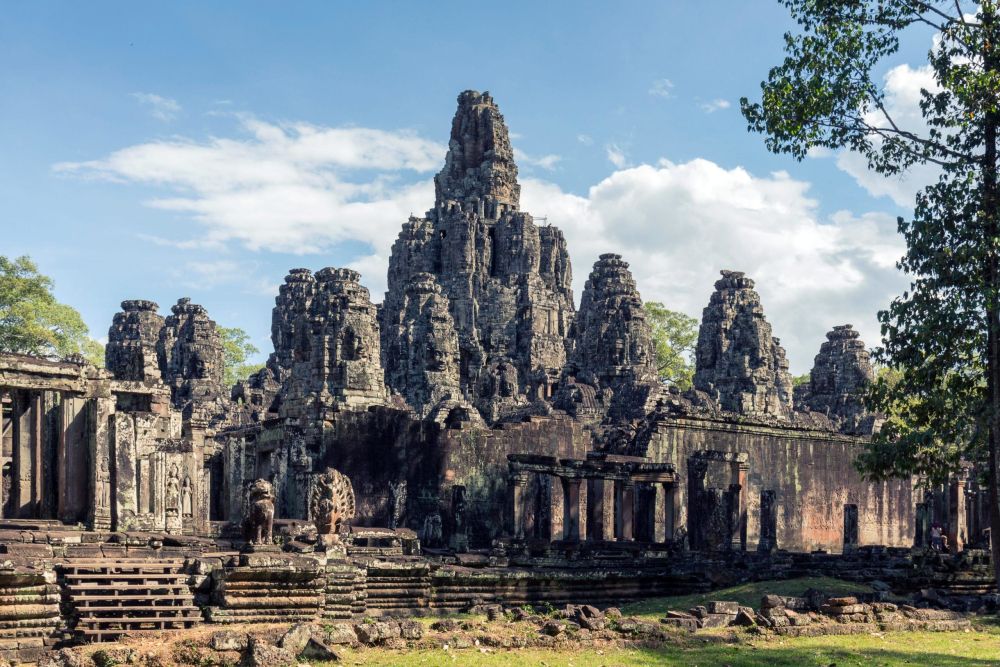

The majestic city of Angkor Thom, located in present-day Siem Reap in Cambodia, is one of the most fascinating historical destinations in the world. Built by the great Khmer king Jayavarman VII at the end of the 12th century, it served as the last and most enduring capital of the Khmer empire. Angkor Thom translates to "The Great City" in Khmer and was intended to be a microcosm of the universe, reflecting the grandeur of the empire at its zenith.
Angkor Thom and the surrounding Angkor region were largely abandoned after the fall of the Khmer empire in the 15th century. Overgrown by the forest and unknown to the wider world, it was not until the 19th century that the Angkor complex was brought to international attention by French naturalist Henri Mouhot.
Mouhot's descriptions sparked a great interest in the Western world. By the early 20th century, efforts were underway to restore and conserve the temples, making them more accessible to visitors. Angkor Thom, alongside the famous Angkor Wat, quickly became a cornerstone of Cambodian tourism.
The formation of the Angkor Conservation Office in 1908 marked the beginning of systematic conservation and restoration efforts. Tourism slowly increased as transportation infrastructure improved. However, the political struggles of Cambodia, including the Khmer Rouge regime, significantly diminished tourism between the 1960s and the late 1980s.
With the stabilisation of Cambodia in the 1990s, tourists began returning in greater numbers. In 1992, Angkor was declared a UNESCO World Heritage Site, which further boosted attention and preservation efforts. This distinction helped to solidify Angkor Thom's status as a must-visit destination for cultural heritage tourism.
In recent years, tourism at Angkor Thom has been influenced by a few notable trends:
The Cambodian government and various international organizations continue to collaborate on safeguarding Angkor Thom's heritage. Efforts include managing visitor impact, such as the introduction of visitor codes of conduct and ticketing systems that regulate the flow of tourists.
Angkor Thom remains an enduring symbol of Cambodia's rich history and is an integral part of the country's cultural identity and tourism appeal. As travelers worldwide become increasingly conscious of the impact of tourism on heritage sites, Angori Thom is poised to continue providing an unforgettable journey through the mystique of ancient Southeast Asia, balancing the needs between conservation and visitor experience.